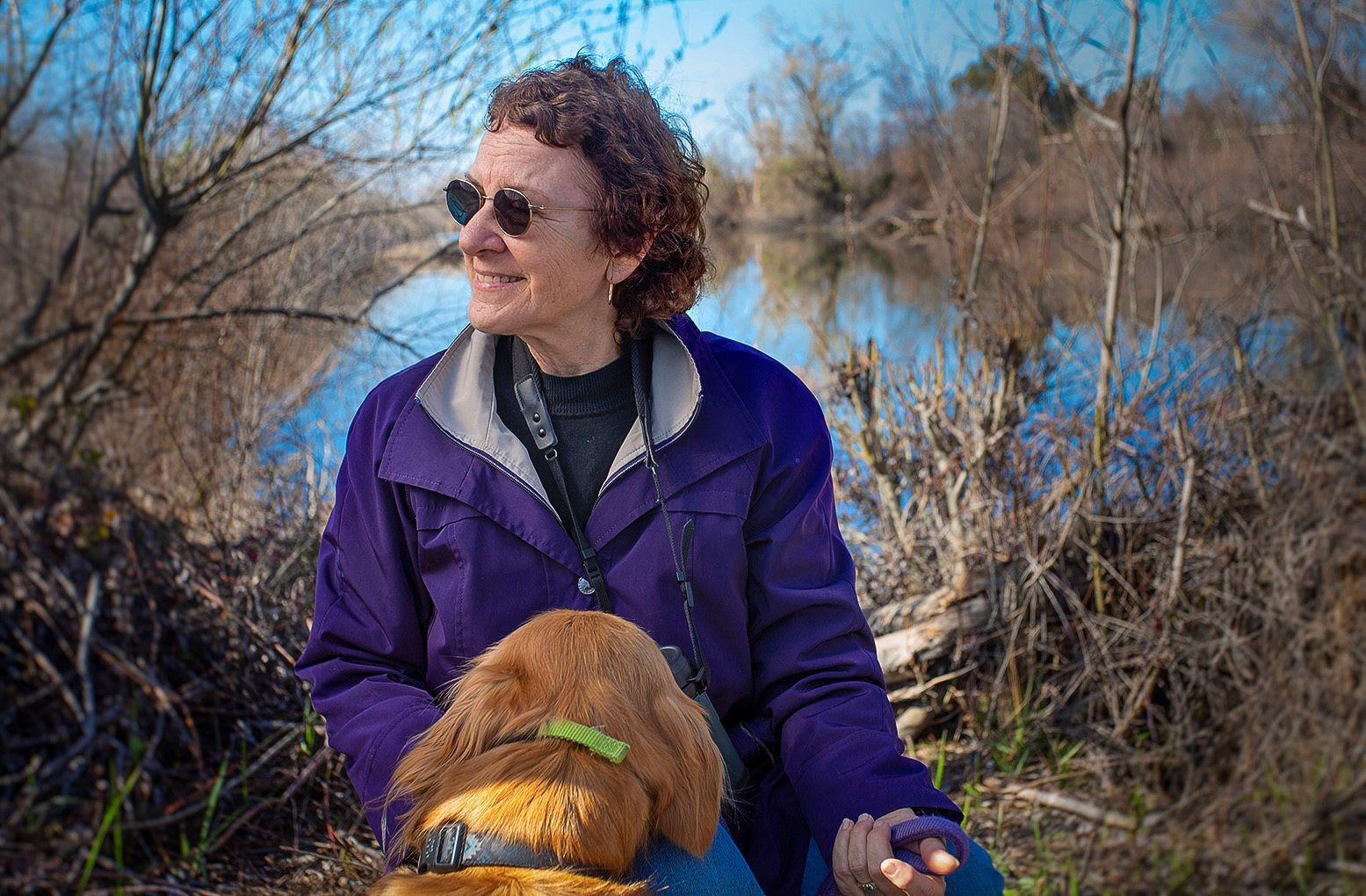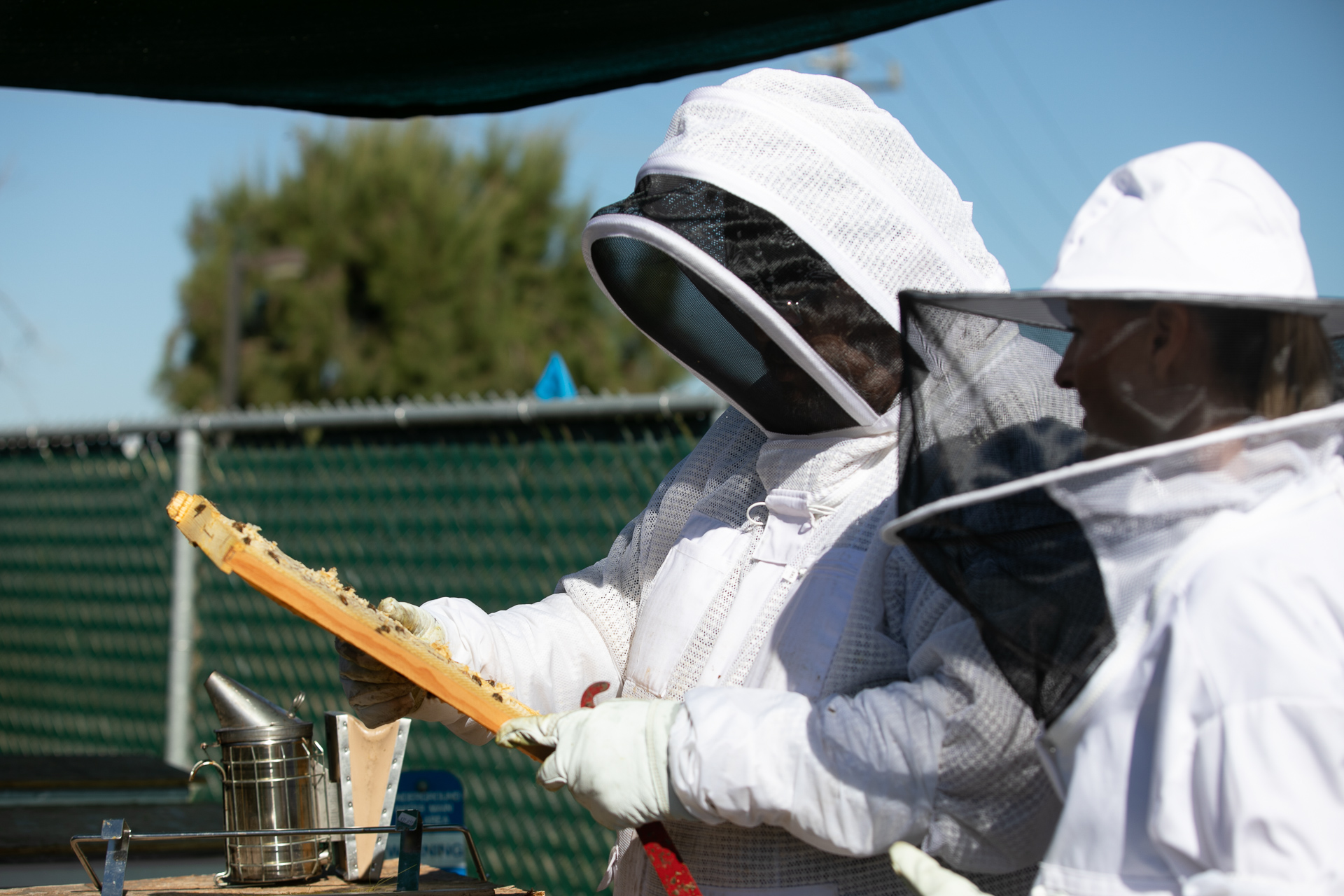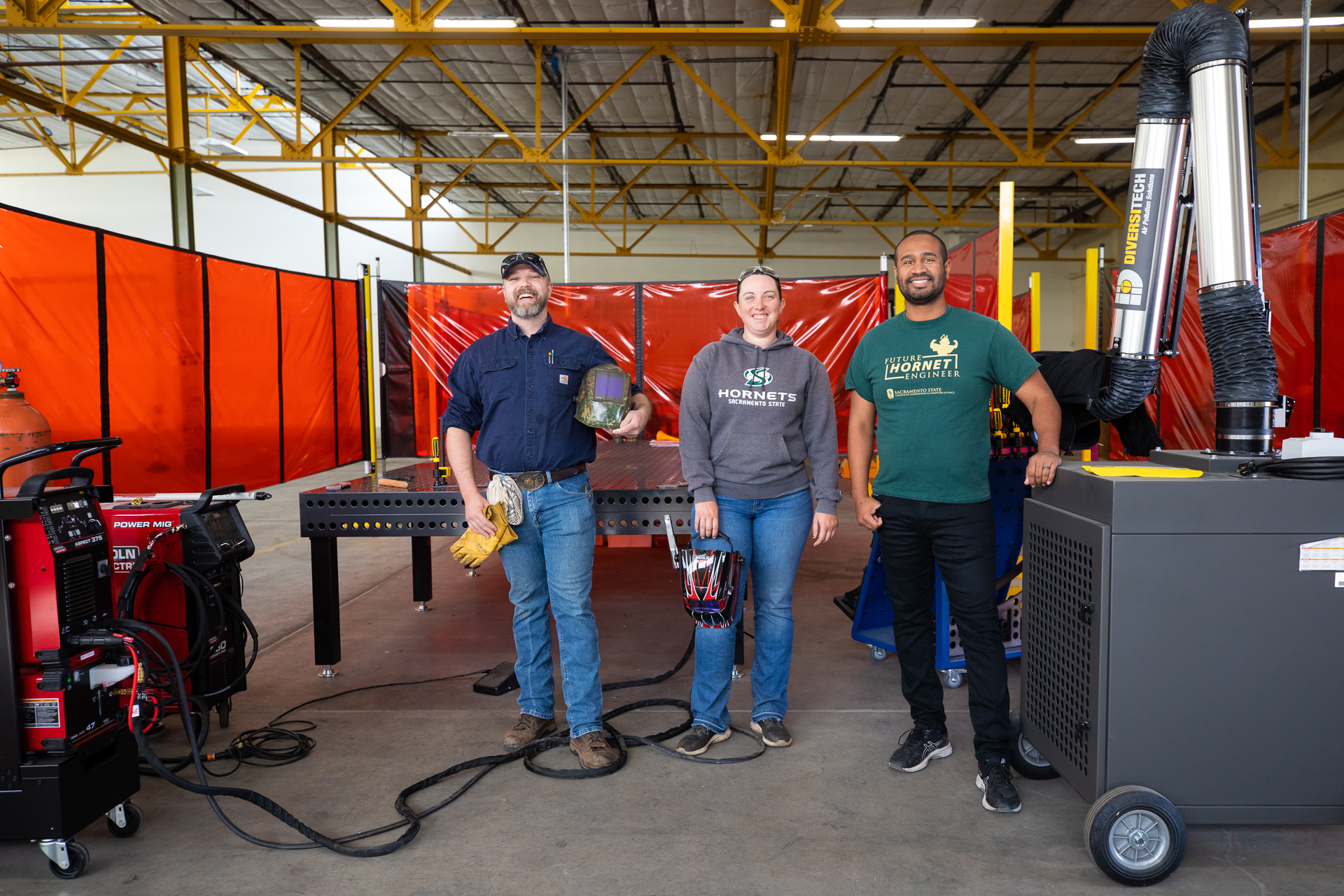Story Content
Recognition comes as two major projects push campus toward environment-friendly goal
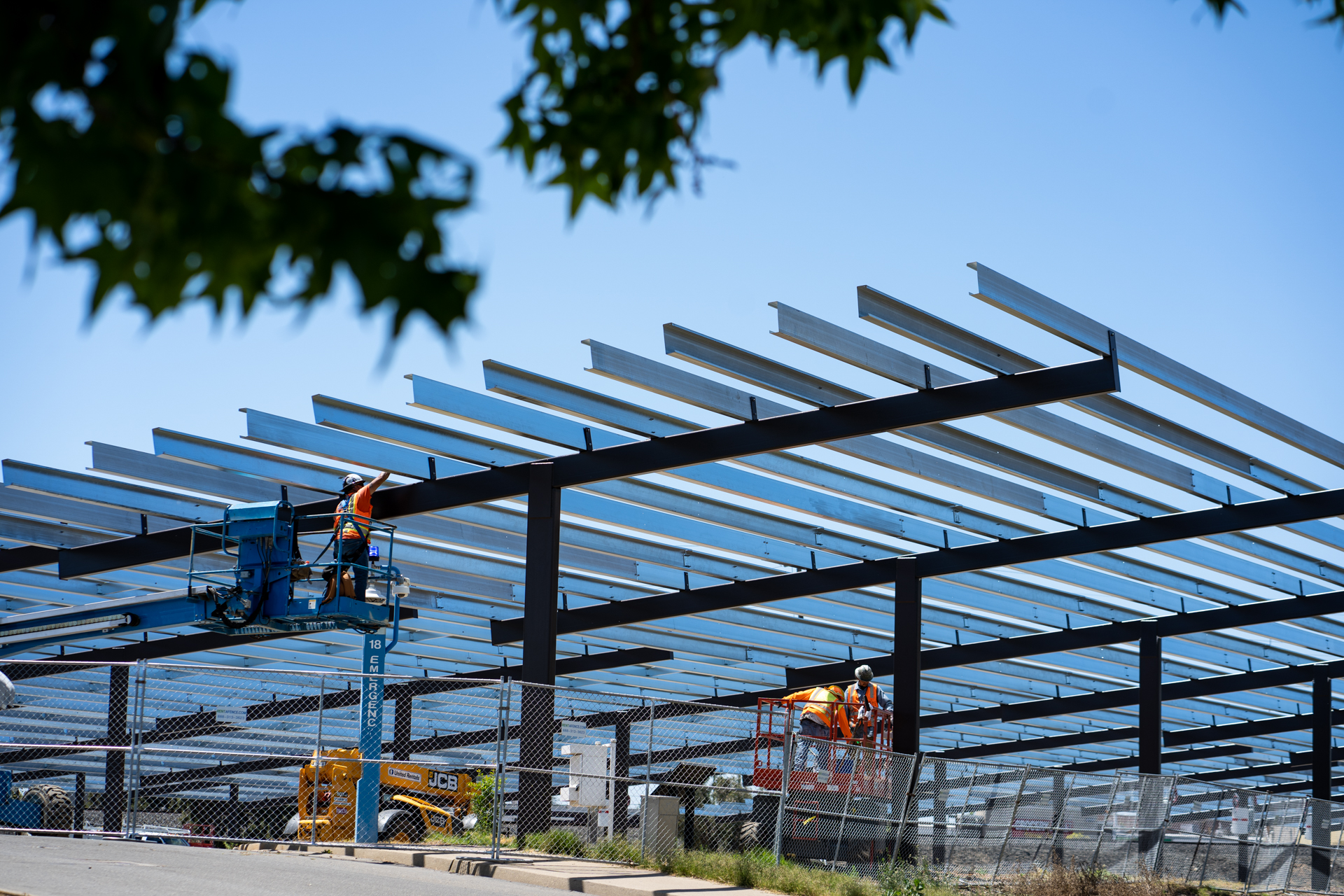
May 07, 2021
The COVID-19 pandemic had a “green” lining for Sacramento State, which has made progress on two major sustainability projects while the campus was largely unpopulated.
These projects, including the massive solar-array installation underway in parking Lot 10, will help propel Sac State toward its goal of achieving full carbon neutrality by 2040 – five years ahead of California’s deadline.
The two projects helped the University earn a STARS Gold rating from the Association for the Advancement of Sustainability in Higher Education. The association’s Sustainability Tracking, Assessment and Rating System, known as STARS, is a transparent, self-reporting framework that allows institutions to measure their sustainability success.
Sac State garnered points for, among other achievements, reducing campus greenhouse gas (GHG) emissions to the lowest level in 20 years and for attaining certifications as a Tree Campus USA, a Bee Campus USA, and a Garden for Wildlife.
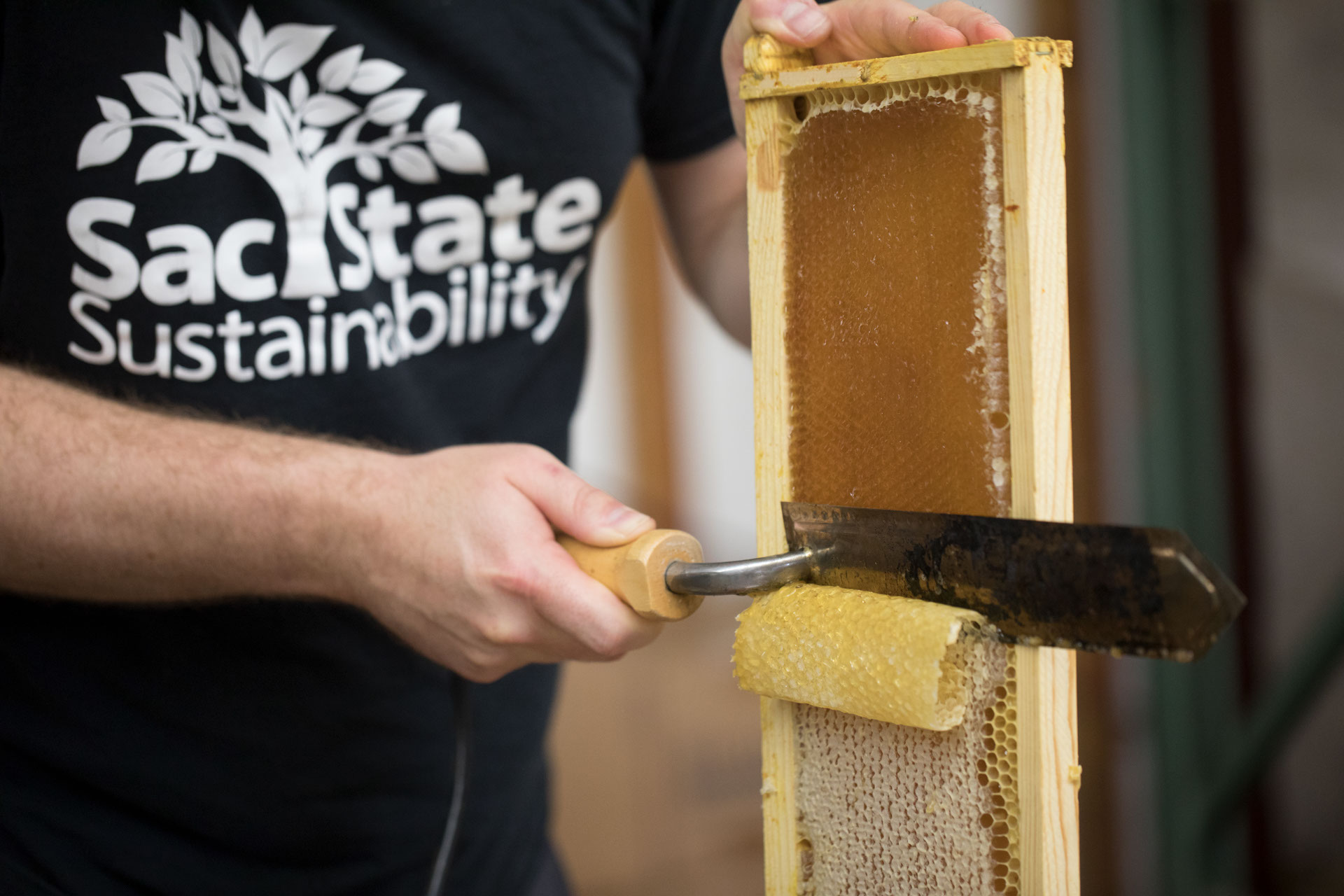
“Sacramento State has firmly established a culture where sustainability is at the forefront of what we do,” said Jonathan Bowman, vice president for Administration and chief financial officer.
“Via the impressive efforts of our Sustainability Team, we actively cultivate and foster an environment where the entire Hornet Family knows it is making a compelling difference regarding climate change. Students are the vanguards in this effort and are the innovators who will make impactful, lasting changes for environmental stewardship.”
The solar project ultimately will expand to two parking structures – 3 and 5 – and will increase Sac State’s clean energy production fivefold. The campus has existing panels atop The WELL and the University Library.
Here’s the breakdown for each new site and the anticipated annual solar production in kilowatt hours (kWh):
- Lot 10 – 3,979 solar panels; 2.25 million kWh
- Parking Structure 3 – 1,000 solar panels; 703,514 kWh
- Parking Structure 5 – 1,886 solar panels; 1.2 million kWh
“For context, the average single family home uses about 11,000 kWh of electricity per year. The campus uses about 45 million kWh each year,” said Ryan Todd, Sac State’s director of energy and sustainability. “After this project is completed, our total power from renewable sources will be about 17-20% per year, and we will be 30% renewable when solar is at highest production over the summer months.”
The $6.8 million solar project was funded by a power purchase agreement at no cost to the University, Todd said.
Sac State has committed to buying energy from the project’s developer at a fixed rate over the next 30 years, saving the University approximately $2.8 million to $3 million in energy costs and reducing GHG emissions.
The second major project involved the University Library, which was shut down because of the pandemic. Last fall, crews replaced 5,000 energy-wasting incandescent bulbs with one-third fewer, and much brighter, LED kits.
The $2.36 million project, funded by the CSU Chancellor’s Office with state money appropriated for campus deferred maintenance and Sac State’s Division of Administration and Business Affairs, lowers the Library’s energy usage by about 54.5% and saves approximately $100,000 annually in energy costs.
Another benefit is the yearly reduction of GHG emissions by 386 metric tons.
Anyone interested in following Sac State’s progress can check out the new Sacramento State Sustainability Dashboard. It tracks data on how much electrical and solar energy, water, and gas the University uses. Future iterations will include information about campus waste, compositing, and GHG emissions.
“The dashboard not only allows us ease of access to our campus energy usage but enables us to share this data outward for both full transparency and student learning opportunities,” said Kristina Cullen, sustainability and energy analyst.
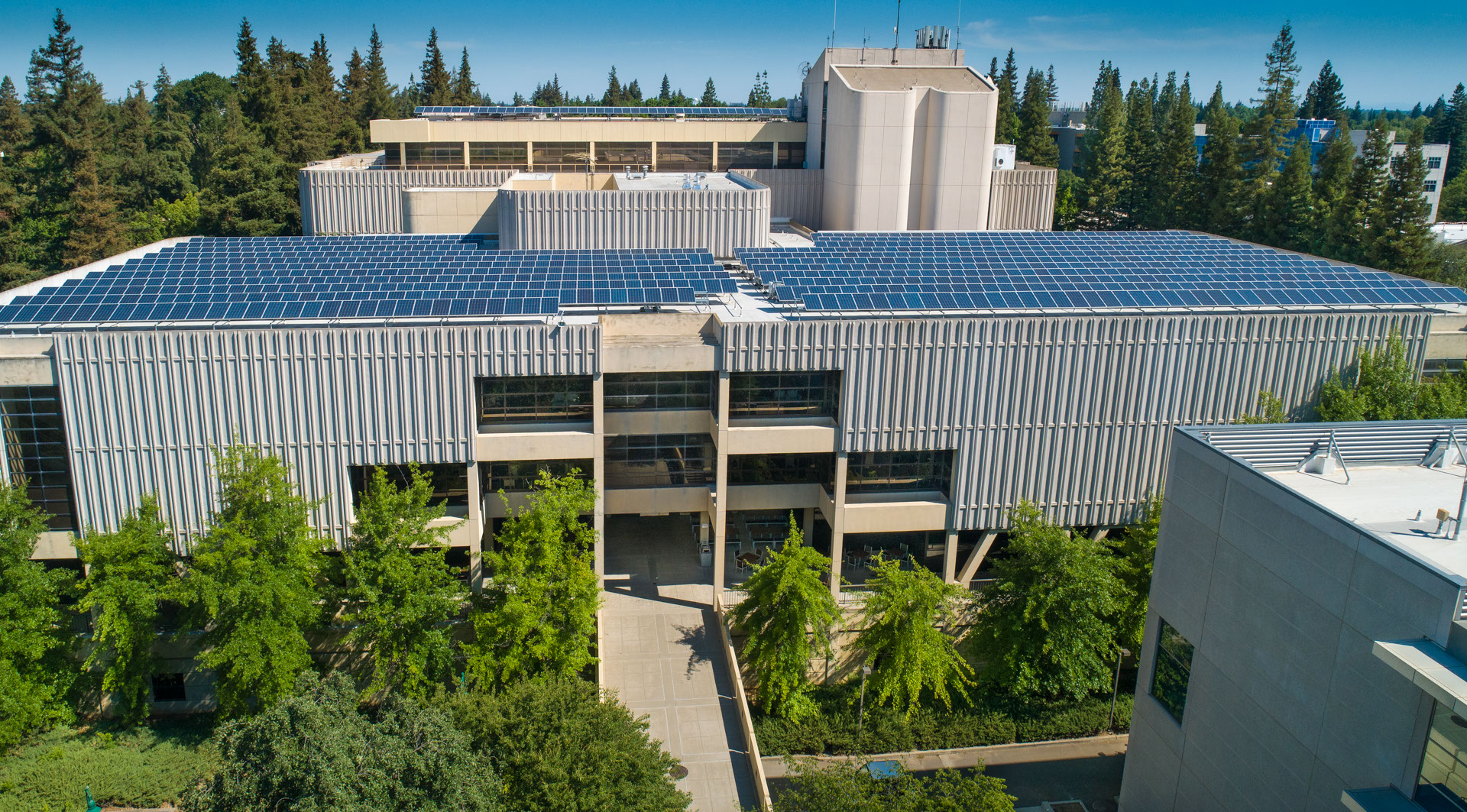
Media Resources
Faculty/Staff Resources
Looking for a Faculty Expert?
Contact University Communications
(916) 217-8366
communications@csus.edu
